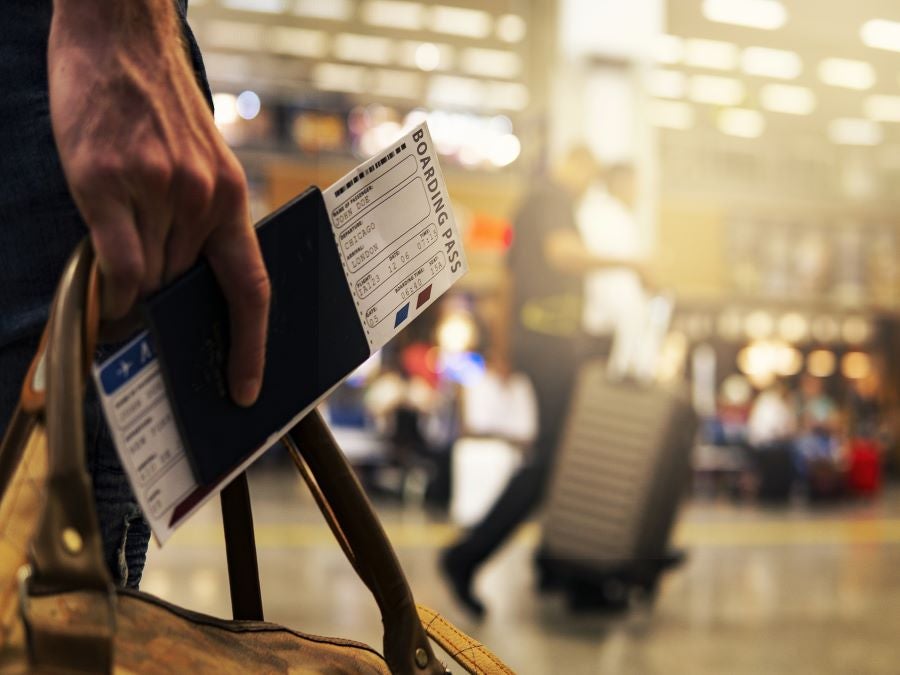
The project, dubbed Project DARTMOUTH, will use AI and pattern analysis technologies to analyse extensive data in real-time in order to identify potential prohibited items in passenger carry-on bags. The AI-driven technology meets open architecture (OA) standards and can be integrated with other hardware and equipment relating to security, along with other third-party algorithms.
Alexis Long, founder and product director of Pangiam, says: “I have been fortunate in the past to serve as the director of security strategy and cyber at Heathrow as well as the chief innovation officer at TSA, an agency of US Department of Homeland Security.
How well do you really know your competitors?
Access the most comprehensive Company Profiles on the market, powered by GlobalData. Save hours of research. Gain competitive edge.

Thank you!
Your download email will arrive shortly
Not ready to buy yet? Download a free sample
We are confident about the unique quality of our Company Profiles. However, we want you to make the most beneficial decision for your business, so we offer a free sample that you can download by submitting the below form
By GlobalData“My experience in those roles left me feeling frustrated at times at the pace of innovation we were seeing in this sector when compared with how we were seeing technology advance in other sectors across the world and in other industries. One of the things we have started doing to change that is opening up security airport market through open architecture.”
Open architecture is considered a powerful tool for airports and screening authorities as it enables flexibility in designing new security checkpoints and does not rely on a single provider. Systems are able to communicate securely due to these standards.
X-ray and computed tomography (CT) screening of baggage requires the hardware to communicate with other checkpoint hardware. Software specialists are able to add value to the data which is created as opposed to relying on proprietary data.
The X-ray images produced are in open-source formats so that other people can read the data. The technology speeds up the process of sharing the data and with the airport and screening authorities.
Long says: “OA has created a whole new market, a market for software developers to look at how they take data from checkpoint screening technology and build software solutions that can help interpret, analyse and enrich it.
“We focus on the role of 3D CT scanners. As that technology gets rolled out, we are building software to bolt on top of those technologies, take the images and run powerful AI technology to interpret and enrich them.
“AI driven intelligence allows us to, through the use of advanced software, screen bags for items that might pose a threat, allowing officers to focus on those items that may pose the greatest risk.”
Pangiam uses AI from Google which has been invested in over years for different use cases, as well as its own data analytical capabilities in the national security space. The technology provides a deeper and more rounded view of the contents of a passenger’s bag.
The Google AI systems are also built to power other parts of Google technology used by operators around the world. Pangiam notes the traditional difficulties relating to machine learning projects are less challenging when using sophisticated technology.
“The technology analyses the data in large volumes to alert officers. Officers are highly skilled. They don’t just look for prohibited items on a banned list, they are looking for things that look outside the ordinary. We are helping them to do that,” says Long.
He adds, “That is important because we know there are groups constantly looking for ways to defeat security and it is arguable whether technical solutions which solely look at known items on lists fully do justice to the role of the officer.”
Aviation security is highly regulated and requires that technology is certified and performing at a high standard. In December 2021, the TSA’s Innovation Task Force (ITF) issued a Broad Agency Announcement (BAA) for transportation security solutions. As a result, ITF is searching for solutions that increase security effectiveness and efficiency.
The first series of trials for Pangiam’s technology will take place at the TSA’s System Integration Facility (TSIF) and the TSA will eventually choose a pilot airport in the US. Elsewhere, Pangiam is working alongside AGS Airports Group and expects trials at Aberdeen, Glasgow, and Southampton airport in the UK.








